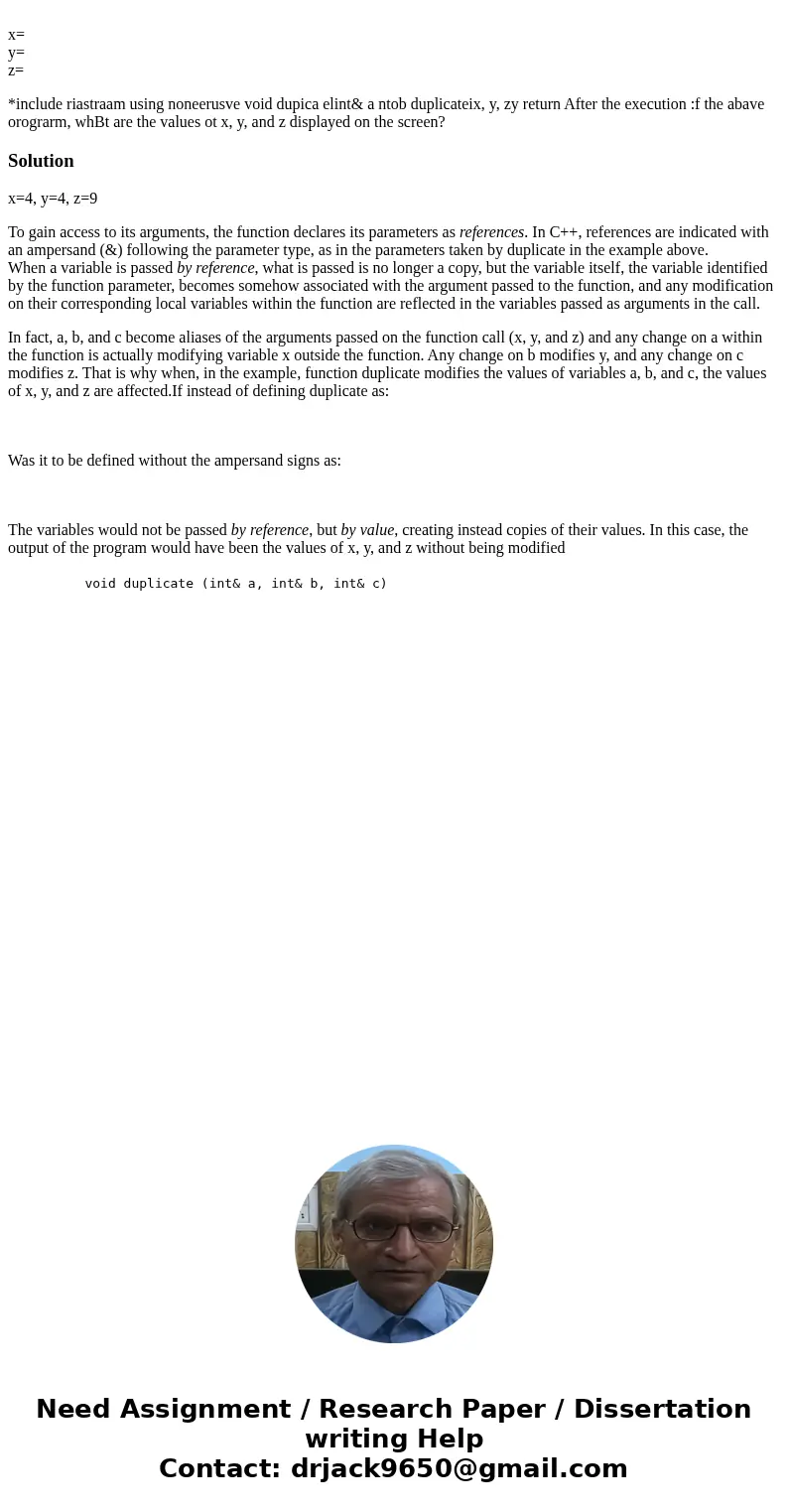x y z include riastraam using noneerusve void dupica elint a
x=
y=
z=
Solution
x=4, y=4, z=9
To gain access to its arguments, the function declares its parameters as references. In C++, references are indicated with an ampersand (&) following the parameter type, as in the parameters taken by duplicate in the example above.
When a variable is passed by reference, what is passed is no longer a copy, but the variable itself, the variable identified by the function parameter, becomes somehow associated with the argument passed to the function, and any modification on their corresponding local variables within the function are reflected in the variables passed as arguments in the call.
In fact, a, b, and c become aliases of the arguments passed on the function call (x, y, and z) and any change on a within the function is actually modifying variable x outside the function. Any change on b modifies y, and any change on c modifies z. That is why when, in the example, function duplicate modifies the values of variables a, b, and c, the values of x, y, and z are affected.If instead of defining duplicate as:
Was it to be defined without the ampersand signs as:
The variables would not be passed by reference, but by value, creating instead copies of their values. In this case, the output of the program would have been the values of x, y, and z without being modified
| | void duplicate (int& a, int& b, int& c) |

 Homework Sourse
Homework Sourse